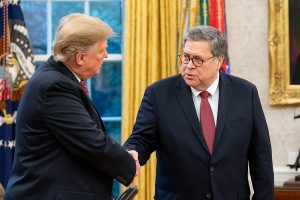by Mitchell Plitnick
Alexandria Ocasio-Cortez (D-NY) has drawn some criticism from the left for avoiding the topic of Israel-Palestine. It’s actually a wise decision on her part. It was obvious during her campaign that she is not well-versed on the issue. N ew members of Congress ought to avoid this dangerous minefield of an issue unless they are very clear about what they want to say and how they want to say it.
But AOC may be learning. Earlier this week, she was asked if she favored reducing aid to Israel and she replied that it is “…certainly on the table. I think it’s something that can be discussed.”
Reducing aid to Israel is perhaps the highest voltage third rail in Beltway politics. But in a marker of how much things have changed in Washington—as well as how far they still have to go—the reactions to AOC’s statement have been far less animated than usual. The Jewish Democratic Council of American (JDCA) issued a condescending but relatively mild statement, telling AOC to consult with three mainstream Democratic leaders—all prominent Jewish members with strong pro-Israel records—on the “correct” U.S. policy. “US-Israel ties must supersede politics,” the statement concluded. Surprisingly, the JDCA did not condemn AOC’s statement, despite its tired implication that support for Israel must be unconditional, unquestioned, and independent of any considerations except what is best for Israel.
Jeremy Ben-Ami, the president of the dovish pro-Israel group, J Street, which opposes cuts in U.S. aid, decided to remark on her full statement rather than just the bit about cutting aid. He tweeted,
Nuanced position from @AOC in wake of Netanyahu annexation pledge: open up discussion of US-Israel relations. J Street view: US can assure Israeli security w/o funding activities that run counter to US values, interests such as annexation, demolitions.
These mild reactions reflect the recognition by mainstream Democrats that sympathy for Israel’s policies and actions is declining in their party and that treating Israel as untouchable is not playing well anymore. The rank and file is more divided than ever on how to balance Israel’s occupation, human rights violations, and aggressive military and diplomatic stances on its legitimate security concerns.
These new realities can and should lead to a serious discussion about U.S. aid to Israel. But this is not a simple question. Advocates of cutting that aid, or of using it as leverage to pressure Israel, must understand how this aid works, how big a challenge it represents for advocacy, and how to make a potentially successful argument against it.
The Obama MOU
On September 14, 2016, U.S. and Israeli representatives signed a new Memorandum of Understanding (MOU) that outlined the terms of U.S. aid to Israel for fiscal years 2019-2028. The government of Benjamin Netanyahu toyed with the idea of waiting for the next administration. Whether led by Donald Trump or Hillary Clinton, it was likely to feature a president with a more positive disposition toward the Israeli right wing and to Netanyahu personally than Obama had. In the end, however, Netanyahu decided that, with Obama offering a significant increase in annual aid, it was better to take the deal on the table.
Obama’s MOU increased Foreign Military Financing (FMF) from $3 billion per year to $3.3 billion. It also guaranteed an additional $500 million per year for missile defense funding. The previous MOU, negotiated by George W. Bush, required the president to request separate funding for missile defense every year.
Total aid rose from $3 billion to $3.8 billion annually, but it came with some new conditions. Over the course of the 10-year agreement, a special exception allowing Israel to use up to 26.3 percent of FMF aid money for “off shore procurement” (OSP) will phase out. OSP refers to materials bought from sources outside the United States. Israel’s exception meant that it could spend 26.3 percent of the money it got with Israeli companies, granting the Israeli weapons and technology industry a significant boost.
The old MOU, for instance, permitted Israel to use up to $400 million of the annual FMF grant to buy jet fuel. This privilege was discontinued in FY ’19, meaning that Israel will have to purchase the fuel with its own funds. This reflects Obama’s driving purpose behind these changes: to maximize the benefits to U.S. corporations by increasing the FMF funds that return to the U.S. market.
The OSP phase-out began this year, with the raw total remaining the same as in FY ’18, $815.3 million, out of a larger aid package. From FY ’20-’23, it drops by a total of just $10 million. But in FY 2024, the drop starts accelerating until 2028 when it disappears completely:
| Fiscal Year | OSP (in millions) |
| 2024 | $725.3 |
| 2025 | $450.3 |
| 2026 | $250.3 |
| 2027 | $250.3 |
| 2028 | 0 |
The United States is making this change gradually to give Israeli firms that have benefited from the OSP exception time to adjust. Many of these firms will likely merge with U.S. corporations, deepening an already complex interweaving of U.S. and Israeli military and tech corporate partnerships. Some may also choose to open subsidiaries in the United States, increasing Israel’s footprint in the U.S. economy and, crucially, among corporate lobbyists.
Insulating Aid to Israel
The changes Obama made to the U.S. aid arrangement increase the urgency for any activists who want to try to pressure Israel through aid. The Israeli defense budget for 2019 is 63 billion shekels, or roughly $17.5 billion. U.S. aid represents about 22 percent of that budget, making aid a tempting target. But it’s a goal that is not so easy to achieve.
U.S. military aid to Israel has always been, to a large degree, a government subsidy to U.S. weapons and military equipment industries. Under the Bush MOU, that subsidy was 73.7 percent of $3 billion each year, or $2.211 billion. Now, it will be 100 percent of $3.8 billion by 2028. There is also the aid money to Egypt and Jordan, which derives from their respective peace agreements with Israel. Arms sales to the Gulf states also rise as Israel’s own military capabilities improve. These factors will mean even more intense lobbying from the defense industry to maintain the status quo and, therefore, the perceived need for a heavily armed Israel.
The new aid terms will also deepen Israel’s need to make sure that Congress remains fully on board with the annual aid package. The loss of the OSP exception means the discontinuation of some $780 million injected annually into Israel’s weapons industry. In the long term, that could end up strengthening Israel’s economy, developing its private sector more robustly, especially through increases in the already deep partnerships with American corporations. But in the short term, it will be a key loss.
The elimination of the OSP exception and the increase in aid will make Israel’s defense budget more dependent than ever on the United States. Israel’s private-sector efforts to merge with U.S. corporations and to establish U.S. subsidiary corporations might eventually mitigate that loss, but for the next few years, Israel will be more vulnerable to pressure. That’s not a concern now, with Donald Trump in the White House, firm Republican control of the Senate, and pro-Israel Democrats entrenched in the House leadership. But in 2020, the calculus could begin to shift, given the growing unease with Israeli aggression among younger and more progressive Democrats.
As counter-intuitive as it might seem, the time to challenge aid to Israel, if that is the strategic choice, is now, during the Trump administration. The current Democratic leadership will not be moved on aid to Israel, of course. But beginning the discussion now—which AOC has just begun—can help create leadership more disposed to putting material pressure on Israel.
The Strategic Choice
However, any fight to cut or end aid to Israel will provoke a response not just from advocacy groups like AIPAC and Christians United for Israel (CUFI) but from some of the most powerful industries in this country. Their arguments will be the tried-and-true ones: that any attack on aid to Israel could lead to the annihilation of the Jewish state and will also cost jobs in vulnerable areas of the United States that depend on the defense industries.
Both arguments are bogus, of course. True, the defense industry profits greatly from aid to Israel, but the loss of aid hardly means the loss of all that income. Israel is sure to shift its budget around to purchase its arms, and there is no shortage of markets for U.S. weapons elsewhere. And it would take many years for any combination of Arab states to match Israel’s military advantage even if the United States were to cut aid completely and immediately, which is a virtual impossibility. Moreover, the primary impact on Israel would be economic and political. It would still be able to purchase U.S. arms but would just have to find its own money to do so. Still, these pro-Israel arguments have always been politically powerful and will remain so.
That’s just one obstacle to cutting U.S. aid to Israel. The MOU is a sort of promise between the White House and Israel, but it is Congress that must authorize the aid in every annual budget. That is where the various lobbying forces are most powerful. But even if advocates could get Congress to change its view on aid to Israel—a quixotic task—they face certain legal challenges.
Congress is bound by law to ensure that Israel maintains its “qualitative military edge” (QME) in the region. This was defined, in the Naval Vessel Transfer Act of 2008, as “the ability to counter and defeat any credible conventional military threat from any individual state or possible coalition of states or from non-state actors, while sustaining minimal damage and casualties.” The same act requires the president to judge any arms sales to other countries in the region, whether they are in conflict with Israel or not, in light of maintaining Israel’s QME. All of this was reinforced by legislation passed in 2012 and 2014. Before even getting to the point of a congressional challenge to the MOU’s commitment of annual aid to Israel, Congress would first need to revise or reverse these laws.
These obstacles mean that any challenge to U.S. aid to Israel requires a much larger political lift. But that doesn’t necessarily argue against a campaign that shines a spotlight on that aid. There are exploitable areas, such as regulations in U.S. law governing arms exports and human rights violations. Although it is not clear how often Israel uses U.S.-made weapons in the occupied territories, advocates have made accusations of their use, with supporting evidence, from time to time. Sustained efforts at investigating these violations will not change Israeli practices, but the additional publicity would have obvious benefits for advocates of Palestinian rights.
A campaign to reduce or eliminate U.S. aid to Israel, or narrower campaigns to tie that aid to specific policy demands, could do a lot to promote dialogue about U.S. policy toward Israel, even if it doesn’t achieve its broader objectives. If advocates undertake campaigns with that understanding, they may find the collateral benefits worth the effort.






In the long term the Democrats will loose out if they touch Israel. Here is why. The aid to Israel is only one percent of Israel’s GDP I highly doubt Israel will change any policy because of that one percent. Israeli trade with India and China is booming. Both nations want what Israel has and all three nations have tense relationships with the same religious minority. If the US were to drop all aid, the US opinion would have less influence in Israeli politics and news. Leave the things the way they are.
Mark Hoffman. Israel has access to US technology, that is why India and China are interested in Israel. It is an indirect way of accessing US technology for them. Military aid is a small part of what US gives Israel. It is time for Israel not to be a burden for US taxpayers. It is about high time that it stands on its own, although I doubt if not for political, military and economic support of US, Israel can last long. (Ask Trump.)
Since we are providing security for Israel, and crucial diplomatic protection at the U N and other international organizations, why are we paying them instead of the other way around?
Such a polite, reasonable tea-time chat about our cover, enabling a brutal arrogant, still vibrant remnant of Western Colonialism while we turn away a defenseless, disarmed, horribly abused indigenous population. We can afford to slow-mo our proposals since we eat well and sleep soundly in the belly of the beast.
“GREAT” Nations do not pay TRIBUTE to foreign places.
If Israel can send rockets to the moon . … why is tRUMP giving Israel CHARITY money stolen from working AMERICAN people? No hungry children or elderly in need of help HERE, hell no. P.S. Every dollar America gives to Socialist Israel is borrowed AT INTEREST from Communist China.
Trump says we can afford to borrow $38BILLION from Communist China to GIVE to Socialist Israel, above and beyond the $4-5Billion we GIVE them every year …… then he Lets the Dual-Citizens like Feinstien, Schumer, SHIFF, Blumenthal, etc .. BLOCK the wall needed to protect YOUR Family.
OH, we cannot afford $25Billion for Our wall. But we build Israel’s 25 foot wall
We cannot afford NATO or Palestinian Aid or most anything else.
All we can afford is Tribute to ISRAEL. “Putting WHO First”? Making WHO Great Again?